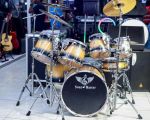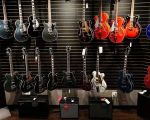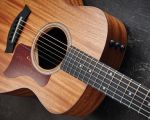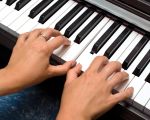A Musical Percussion Instrument: Unleashing the Power of Rhythm
Whether you're an aspiring musician, a seasoned percussionist, or just a lover of rhythm, musical percussion instruments have a unique way of capturing the heart of any song. From the calming beat of a bongo drum to the explosive sounds of a snare drum, percussion instruments form the backbone of music worldwide. Their versatility allows them to add depth, emotion, and movement to any musical composition.
In this article, we'll explore different types of musical percussion instruments, the role they play in music, and how you can harness their power. We'll also provide tips on how to get started with percussion, whether you're playing for fun or planning to pursue it as a professional endeavor. So, let’s dive into the world of rhythm!
1. The Importance of Percussion in Music
Percussion instruments are the heartbeat of any music ensemble, providing the rhythm and pace that the rest of the instruments follow. Without percussion, music can feel disjointed and lifeless. They are the foundation upon which melodies and harmonies are built. In orchestras, rock bands, jazz ensembles, and even electronic music, percussionists are responsible for creating an energy that guides the music forward.
Whether it's the steady beat of a bass drum or the sharp attack of a cymbal, percussion instruments control the tempo and structure of a performance. They often set the tone, dictate the flow, and provide the necessary pulse that keeps everything in sync. As such, percussionists need to have a deep understanding of rhythm and timing, which are just as important as musical skill in mastering these instruments.
2. Popular Types of Percussion Instruments
When it comes to musical percussion instruments, there are two main categories: unpitched and pitched. Unpitched percussion instruments produce a sound without a definite pitch, while pitched percussion instruments produce notes that are in tune with melodies.
Examples of unpitched percussion instruments include:
- Drums: The most commonly known percussion instrument, including snare drums, bass drums, tom-toms, and bongos.
- Cymbals: Often used to add dramatic accents or crashes in music.
- Tambourines: Known for their jingling sound, tambourines are commonly used in folk and pop music.
- Claves: Used in Latin music to create syncopated rhythms.
Pitched percussion instruments, on the other hand, include:
- Xylophone: A set of wooden bars played with mallets, offering clear, sharp pitches.
- Vibraphone: Similar to a xylophone but with metal bars and a resonating motor that produces a vibrato effect.
- Marimba: Larger than the xylophone, offering a deeper and warmer tone.
3. The Role of Percussion in Different Music Genres
Each musical genre utilizes percussion instruments differently, adapting their sounds to enhance the overall feel of the music. For example, in classical music, percussion instruments like timpani and snare drums often add grandeur and emphasize important moments in a composition. In jazz, percussion plays a crucial role in driving the syncopation and intricate rhythms that define the genre.
In rock and pop, the drum set is the centerpiece of the rhythm section, providing a steady beat and supporting the vocals and guitar. Meanwhile, in Latin and Afro-Cuban music, percussion instruments like congas, bongos, and timbales create intricate polyrhythms that form the backbone of the music.
Even in modern electronic music, percussion is vital. While drum machines and electronic beats have become popular, live percussionists often perform alongside DJs to bring a raw, human element to the performance.
4. Tips for Choosing the Right Percussion Instrument
When choosing a percussion instrument, it's essential to consider the type of music you want to play and your level of experience. Beginners may want to start with something like a djembe or bongo drums, which are relatively easy to learn but still provide great rhythm. On the other hand, more experienced percussionists may opt for timpani or a drum kit, which require more technical skill and an understanding of complex rhythms.
It's also crucial to consider portability, especially if you plan to perform live or on the go. Some percussion instruments, like the cajón or tambourine, are compact and easy to transport, making them ideal for gigs or traveling musicians.
5. How to Start Playing Percussion Instruments
If you're new to percussion and interested in learning, the best way to start is by taking lessons or using online tutorials to understand the basics. Start by practicing with basic rhythms and gradually work your way up to more complex beats. It's essential to practice with a metronome or along with your favorite songs to develop a sense of timing and rhythm.
Many beginners start with simple percussion instruments like the snare drum or bongo drums, as they don’t require advanced techniques. Once you’re comfortable with basic rhythms, you can move on to more challenging instruments like the xylophone or drum set.
6. The Benefits of Playing Percussion Instruments
Learning and playing percussion instruments come with a variety of benefits beyond musical enjoyment. Percussion is great for improving coordination, rhythm, and even your mental focus. Studies have shown that playing percussion can help reduce stress, increase cognitive function, and improve physical endurance.
Furthermore, playing percussion can be a highly social activity. Many percussion instruments are designed to be played in groups, and ensemble performances allow musicians to collaborate, communicate, and create something truly unique together.
Conclusion: Embrace the Rhythm
Musical percussion instruments are a fantastic way to engage with music on a deeper level. Whether you’re playing a simple rhythm on the bongos or exploring more complex beats on the drums, the impact of percussion on music is undeniable. With the right instrument and a little practice, anyone can add a powerful, rhythmic element to their musical journey.
If you're looking to explore more percussion instruments or find the best tools for your musical endeavors, be sure to check out [Beat Trigger] for top-quality products and expert recommendations. Embrace the rhythm, and let the music flow!
<> SEO Title: Best Percussion Instruments for Rhythm Enthusiasts SEO Keywords: percussion instruments, musical percussion, best percussion instruments, rhythm instruments, percussion for beginners SEO Description: Discover the best percussion instruments and tips for learning rhythm. Explore the importance of percussion in music, from drums to xylophones, and learn how to get started.







